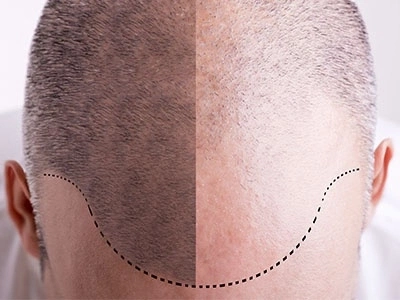Things to Know About Hair Transplantation in 5 Questions
 13.06.2023
13.06.2023Hair transplantation is one of the methods preferred by those who want to find a permanent solution to hair loss problem. However, people who have not yet had this procedure can have questions such as, "How is hair transplantation performed?", "Is hair transplantation painful?” Here's how we can answer these questions:
How is hair transplantation performed? Is there any pain during the application?
Hair plantation is the procedure of transplanting hair taken from the areas above the nape and ear of our patients, whose donor region density is sufficient, to the balding area one by one. Since local anesthesia is applied before the operation, patients do not feel ache or pain.
What are the methods used in hair transplantation?
Technically, three methods are used in hair transplantation. The FUT method performed with a surgical incision is actually a method that is not much preferred today. DHI and FUE methods are much preferred. The FUE method is the procedure of transplanting the grafts that have been previously taken with forceps into the channels that have been opened with the help of a sapphire pen. In the DHI method, the canal is opened and the grafts are placed inside the hair root by attaching the previously taken grafts to the tip of the choi pens. Hair transplantation method is determined by considering the issues such as the density of the donor area of the patient, baldness in the hairless area, and by discussing with the patient.
What should be expected after the hair transplantation procedure?
After the hair transplantation procedure, scabbing begins immediately in the transplantation area. Scabbing process can take approximately 15 days. After this process, the scabs begin to shed and hair begins to grow in those places. The hair that usually grows as thin strands at the beginning grows as thick strands after the stage that we call shock shedding. Actually, these are the new hair that the patient will now have. This usually happens as of the 3rd month. These hairs continue to grow by constantly becoming denser and thickening. Usually, results begin to be seen in the 7th and 8th months. Hair continues to grow until the 12th month.
When is it possible to enter the pool, sea or sauna after hair transplantation?
For these activities, the scabs formed after the operation should be shed and even another 15 days should be waited for.. In other words, after a total of 1 month, you can enter the pool, sea or sauna. The reason why we recommend the pool and sea in this process is that there is a risk of infection.
Is hair transplantation performed on women?
Hair transplantation is performed on women if there is no thyroid dysfunction. In our female patients with thyroid dysfunction, a progress should be made to solve this problem first. Later, hair transplantation can be performed. In female patients, we generally recommend unshaven FUE and DHI methods. Because female patients have long hair, it is undesirable for them to experience problems with the appearance of the donor area for two to three days after the operation. During the operation, the long hair on the back is tied up, and then it is released; so that the donor area remains at the bottom, the scab in between are not visible. From this point of view, female patients are even considered more advantageous than men in terms of aesthetic appearance.